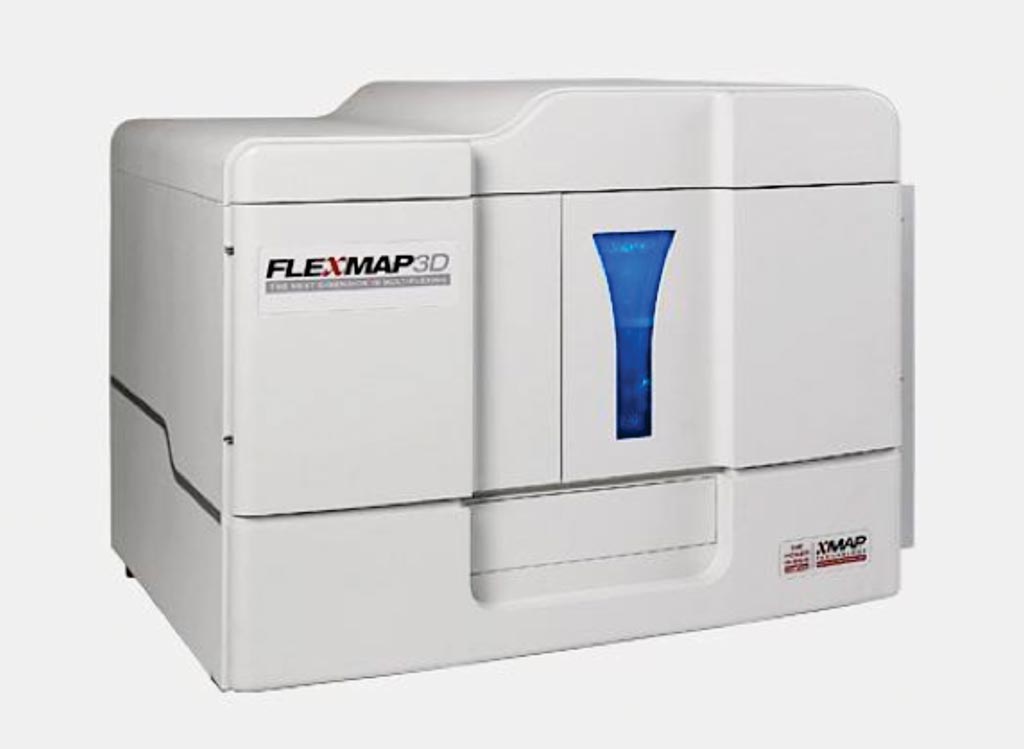Plasma Human Proteins Associated with Acute Pediatric Malaria
By LabMedica International staff writers
Posted on 27 Nov 2018
Severe malaria caused by Plasmodium falciparum continues to be one of the leading infectious causes of morbidity and mortality in children worldwide. The intimate interaction between the pathophysiology of the human host and the biology of the P. falciparum parasite results in a wide spectrum of disease outcomes in malaria.Posted on 27 Nov 2018
Development of severe disease is associated with a progressively augmented imbalance in pro- and anti-inflammatory responses to high parasite loads and sequestration of parasitized erythrocytes. Although these phenomena collectively constitute common denominators for the wide variety of discrete severe malaria manifestations, the mechanistic rationales behind discrepancies in outcome are poorly understood.

Image: The FLEXMAP 3D instrument is an advanced and versatile multiplexing platform. The platform uses both magnetic and non-magnetic microspheres and is capable of simultaneously measuring up to 500 genes or proteins from a small sample (Photo courtesy of Luminex).
Protein scientists from the KTH Royal Institute of Technology (Stockholm, Sweden) and their colleagues collected plasma samples from pediatric malaria patients, as well as community controls, in the regional hospital as well as health centers in a catchment area of Rwanda. The patients were enrolled over a 3-year period, that begun in 2011 and ended in 2014. In total, 541 samples were analyzed with associated clinical data, including 178 controls, 183 patients with mild malaria and 180 patients with severe malaria. The team screened a total of 255 antibodies, targeting 115 unique human proteins, as well as assay specific controls and analyzed on a Flexmap 3D instrument.
The team identified 57 proteins with significantly altered levels in patients with malaria compared to controls. From these, the 27 most significant proteins were selected for a stringent analysis approach. There were 24 proteins that showed elevated levels in malaria patients and included proteins involved in acute inflammatory response as well as cell adhesion. The remaining three proteins, also implicated in immune regulation and cellular adhesivity, displayed lower abundance in malaria patients. In addition, 37 proteins were identified with increased levels in patients with severe compared to mild malaria. This set includes, proteins involved in tissue remodeling and erythrocyte membrane proteins. Collectively, this approach has been successfully used to identify proteins both with known and unknown association with different stages of malaria.
The authors concluded that a set of promising candidate markers have been identified that significantly separate mild and severe malaria cases, despite the clinical overlap between these disease states. New potential markers were identified that could be important leads towards an increased understanding of host-parasite interaction and pathogenesis of the disease. The study was published on November 15, 2018, in the Malaria Journal.
Related Links:
KTH Royal Institute of Technology














